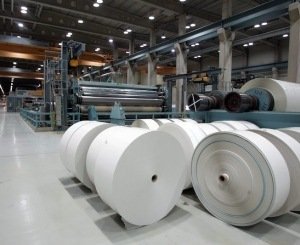
Intergraf, the Brussels-based organization representing European printers has warned in a press release dated 25 January 2022, that the current paper crisis will have severe repercussions in the supply of print products for all economic markets and endangers the rebound of our industry. Integraph makes the point that the graphic industry supports all economic activities with their products, be it for information, news, entertainment, education, advertising or packaging.
Print plays a huge role in everyday life – so much so that it is frequently overlooked. Our sector supplies the packaging for goods at the supermarket, the books, newspapers and magazines we read as well as the boxes our digitally ordered food, clothing, gadgets and much more are packaged in. These products are produced by 120,000 printing companies all over Europe that employ 600,000 people and generate a turnover of Euro 80 billion (approximately Rs 650,000 crore).
“We have real bottlenecks in our paper supplies. We can see that this shortage will increase in the upcoming months,” says one of the larger sheetfed printers in Europe. While during the past two years, graphic products have clearly witnessed a decline, demand is now almost back to pre-pandemic levels. In 2020, customers were forced to reduce print advertising and many switched to electronic means for their communication. In mid-2021, this market has come back to print, but customers are now facing surging prices and uncertainty about the supply of raw materials.
Strike in publication paper mill
The ongoing strike in some Nordic paper mills aggravates the situation particularly for paper grades such as LWC (Lightweight coated) and MWC (medium weight coated) paper. It is estimated that in some countries close to 50% of this paper for heatset printing comes from one supplier. The stocks of printing companies will not last until the strike has been settled and printers will be forced to announce to their customers their incapacity to fulfil the orders. This means that publishers will be forced to abandon print editions due to a lack of paper. The shortage affects all types of print products but is particularly detrimental to time sensitive printed matter such as the publication of newspapers, magazines, books and advertising. “We have financial pressure both from customers and now also from our suppliers. I am afraid that the present situation drives our customers even more towards the digital market and in the long run both we and our suppliers will suffer more. This is not a healthy development,” says another printer.
Intergraf has terrifying feedback from members that 40% of the paper needed from mid-February onwards cannot be obtained. The inability to print will cause large financial losses not only to the printing company, but also to the final customer. This will entail foreseeable shortages of many printed consumer goods and some products including food and medical supplies that cannot be put on the market due to a lack of packaging. A large format offset printers says, “We are losing loyal print buyers, catalogue users, due to production costs and shortage of paper. There is a big risk that those print buyers are not coming back. This jeopardizes our industry and we will suffer irretrievable damage.”
Call on national authorities to take serious note
Beatrice Klose, secretary general of Intergraf states, “Print is an essential and important part of our daily life. Many citizens rely on printed information. Apart from being a large sector of our own, our industry and our products support citizens, culture and all other economic branches in one way or the other. This support is endangered by the current tensions in the supply chain.”
Intergraf calls on the paper industry to ensure a collaborative approach and transparent discussion of the current and future development of graphic paper supply in Europe. Intergraf calls on European as well as national authorities to take the current situation seriously and ensure sufficient supply of raw material (fresh and recycled fibres) to allow a continuous production of essential goods such as packaging, newspapers, magazines, books, and other print products that serve European citizens in their daily life.










